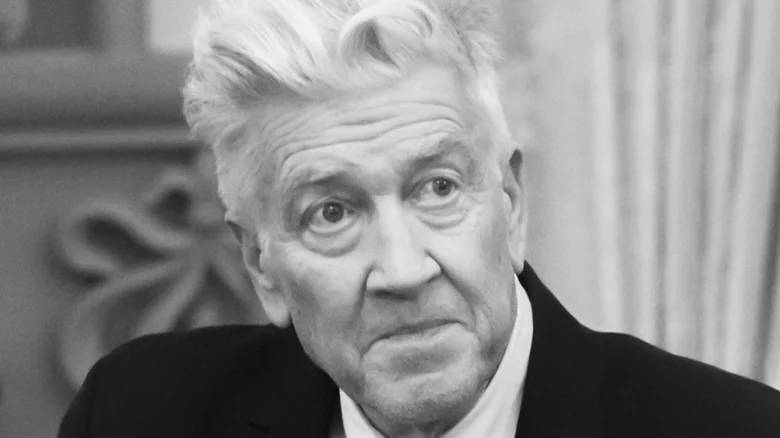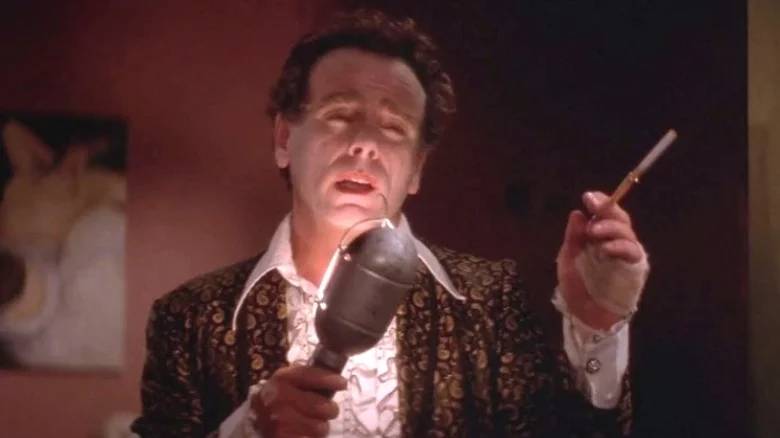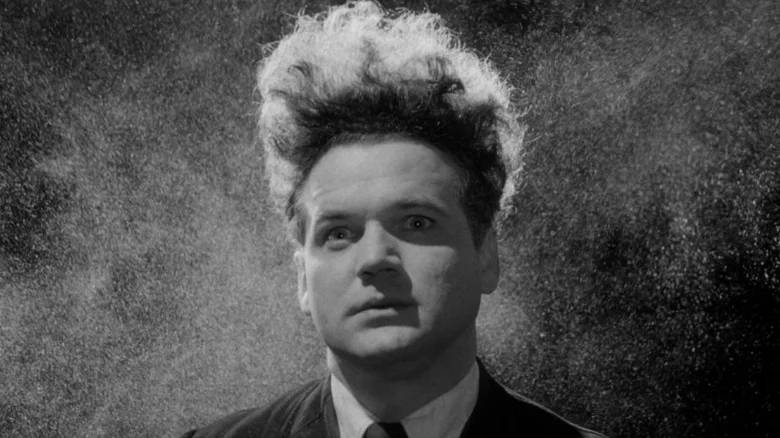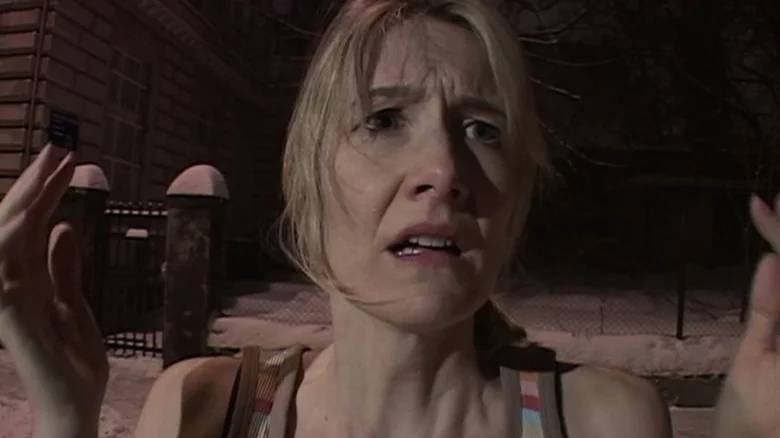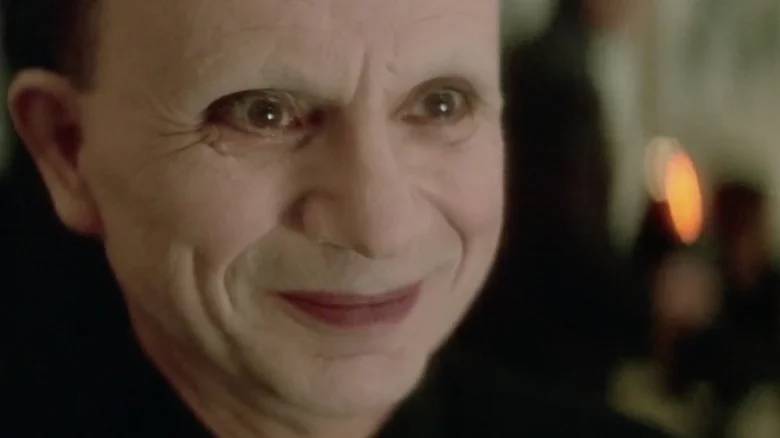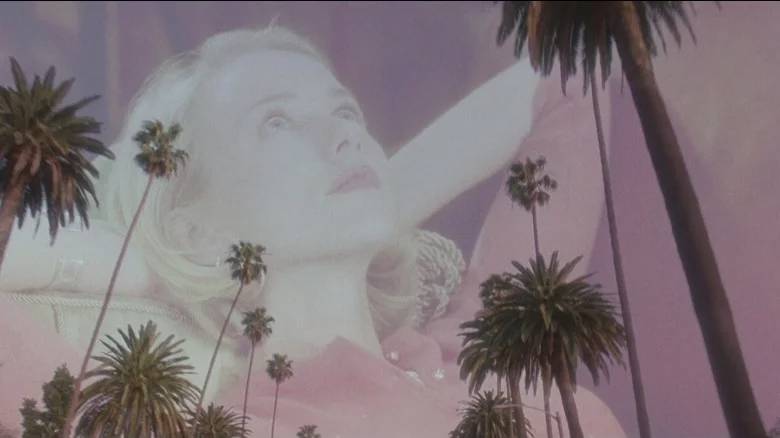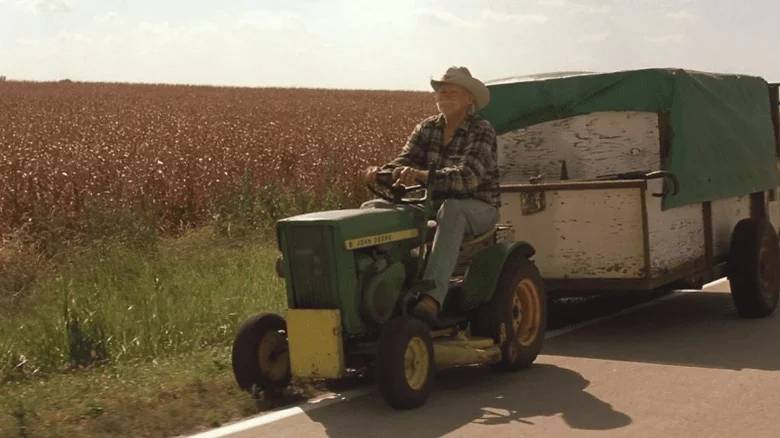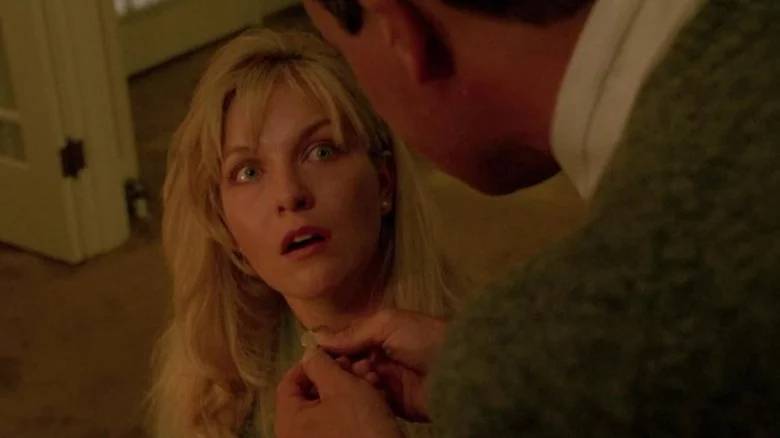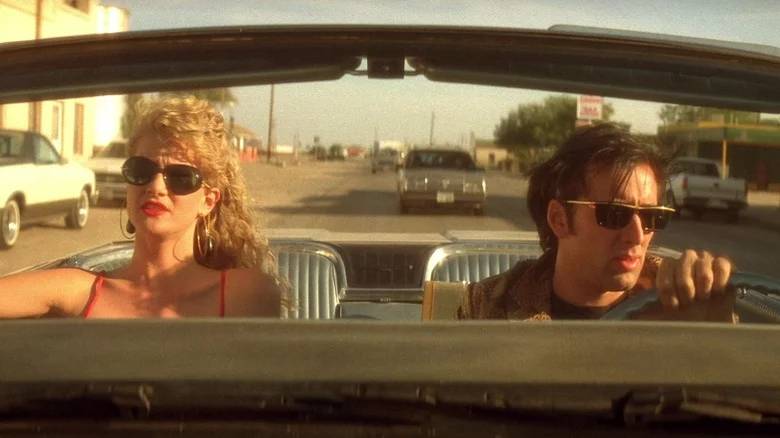Is there another filmmaker who is as inventive as David Lynch? Other filmmakers have established themselves as well-known and influential (David Cronenberg, John Carpenter, and John Woo come to mind), but none of them have a real term to characterise the countless imitators that followed them (“Lynchian”). Other than Hitchcock, no other director’s surname can accurately describe the type of movie you are viewing. Lynch’s works have had a significant influence on cinema that is frequently imitated but rarely surpassed.
Lynch, as a director, adamantly rejects explanations of his work and favours an emotional rather than a cerebral reaction from his audience. Leting a David Lynch film wash over you is the finest way to appreciate it, rather than picking out the details to figure out what it’s really saying.
While many of Lynch’s movies deal with similar subjects, such as personal duality, identity conflicts, and the tension between our outward appearances and the evil that lurks beneath the surface, some of his movies defy all attempts at explanation. Here is our assessment of Lynch’s movies from worst to finest, with the possibility of more Lynchian horrors in the future.
Blue Velvet
The idyllic setting that is corrupt underneath is a common topic in Lynch’s work. This is wonderfully captured in the opening scenes of “Blue Velvet,” which feature white picket fences, Bobby Vinton’s music, and suburban housewives watering their gardens until the camera slowly pans down into the weeds and reveals insects in gory detail devouring one another. It’s a gruesome, fantastical image to start with, but it’s not the only one in this masterful neo-noir work.
As Jeff (Kyle MacLachlan, David Lynch’s ideal leading man) struggles to decide between the wholesome Sandy (Laura Dern) and the damaged Dorothy, this contrast serves as the movie’s central theme (Isabella Rossellini). The film’s most famous sequence, in which Jeff’s Hardy Boys-style inquiry is abruptly stopped when Dorothy discovers him hidden in her closet, makes this split very evident. As Frank Booth (Dennis Hopper), a gas mask-wearing villain who is unpredictable, twisted, and cruel, is introduced, the movie’s tone shifts to one that is deeper and darker.
However, Lynch still exhibits his bizarre sense of humour, as seen in the moment where Dean Stockwell impersonates Roy Orbison. Perhaps the most Lynchian scene ever, it’s humorous, unsettling, and strange. “Blue Velvet” is Lynch’s most simply cinematic work, with echoes of Hitchcock’s “Shadow of a Doubt” in its portrayal of the corrosion of small-town innocence and of “Rear Window” in its use of voyeurism. It combines elements of melodrama, film noir, and classic Hollywood, and it still has the power to unsettle and disarm viewers today.
Dune
This cinematic version of Frank Herbert’s epic science fiction novel has some redeeming qualities despite its dismal reputation and Lynch’s personal regret over the way the finished product came out. The clothing and casting are superb, the set design is chic and realistic, and the effects are mainly still effective. The writing has issues since it manages to be aloof, jumbled, and somehow both overlong and short, primarily because of the editing that mutilates the character arcs of numerous characters. Despite not being perfectly accurate to the book, “Dune” gets some things exactly right, but with more Lynchian flourishes (the gigantic foetal space guild representative, Sting wearing metallic underpants).
Lynch’s portrayal of Herbert’s settings and larger-than-life characters would prove to be a significant benchmark for future adaptations; for example, the 2000 Sky TV production made use of the wicked Harkonnens’ unique red hair, which is absent from the books. Even only for the colourful performances, “Dune” is worth seeing, with Kyle Maclachlan’s Paul Atreides striking the perfect harmony between affable and imperious, and Kenneth MacMillan’s Baron Harkonnen being the living incarnation of repulsiveness. The choice of Brad Dourif to play the deranged assassin Piter DeVries is one of the most brilliant casting decisions for the supporting ensemble.
Even though Lynch had a tight budget and a difficult production, he was still able to give the movie an epic scope, which is a credit to his abilities. However, while some parts of the movie are good, the whole is a mess. Lynch’s “Dune” looks worse as an adaptation of Denis Villeneuve’s picture, but viewed on its own terms, it isn’t a bad movie.
Eraserhead
“Eraserhead” might be Lynch’s interpretation of “She’s Having a Baby,” similar to how David Cronenberg defined “The Brood” as his “Kramer vs. Kramer.” The premise is actually rather straightforward, at least when compared to Lynch’s later films, and this is the director at his most unadulterated. Despite its reputation as a strange arthouse movie. Although the moving, oozing chickens and the lady in the radiator have Lynchian characteristics, the story’s central theme is about a potential father who is not yet prepared to have children. It brilliantly expresses the mania and worry that set in when a new baby enters the picture and completely upends your life. The infant itself is one of the ugly, nightmare-inducing, and frightening depictions of a newborn that cinema has ever created. It looks completely alien. “They’re still not convinced it’s a baby,” the mother says.
The entire movie has a jet-black sense of comedy, and Jack Nance plays the title character—a man with an odd hairstyle and a continuous look of confusion—to perfection. It’s incredible that Lynch’s aesthetic was so firmly set in his very first movie; the oppressive, industrial sound design would later become a trademark of his, and the monochromatic cinematography gives this movie a distinctive appearance all its own. The film “Eraserhead,” which was both scary, humorous, and terrifying, had a significant impact and is still one of the best directorial debuts ever made.
Inland Empire
“Inland Empire” may seem endless to some, but I think it’s a necessary (though too long) dosage of Lynchian craziness. “Inland Empire,” which was entirely shot on digital video, is Lynch at his most ambitious, completely eschewing any pretence of a traditional narrative in favour of a series of vignettes centred on Laura Dern as an actor shooting a new movie, a remake of a purportedly cursed movie whose two leads were murdered.
Dern starts to believe she is becoming her character, and the boundary between truth and fiction starts to blur. Lynch’s propensity for dualism and identity loss resurfaces here. Despite certain sequences being unrelated to the primary plot, the overall impression is one of coherence. Even yet, the flashbacks to earlier scenes are startling, particularly the ones that feature enormous anthropomorphic bunnies; not since “The Shining” have people dressed as animals been so unsettling.
Dern portrays a character who is having a hard time maintaining her grip on reality in a compelling, dramatic performance. Her slow-motion dash in the direction of the camera is genuinely unpleasant, and one of Lynch’s most haunting images is Dern’s terrified, deformed visage. Although “Inland Empire” is 180 minutes lengthy, it has an effect and is possibly the most authentic Lynch film since “Eraserhead.”
Lost Highway
Lynch had already experimented with neo-noir, but “Lost Highway” marks a much more significant entry into the genre. It is brilliantly filmed and highly stylised, with neon lighting and shadows evoking film noir just as much as gangsters and the femme fatale do. You can see the skeleton of the plot of Michael Haneke’s “Cache” and more than a hint of “Vertigo” in the duality of the two characters played by Patricia Arquette. The premise—someone is arrested, then literally changes their identity in jail—is surprisingly simple and would be a strong premise for a more mainstream film.
The story is intriguing and atmospherically beautiful, but it doesn’t hold your interest like the similarly themed “Mulholland Drive” does. Various sequences are unsettling and spooky, especially those featuring the dead-faced Mystery Man (Robert Blake), an exquisitely ethereal and frightening figure.
However, compared to the genuine discomfort of “Blue Velvet” and “Eraserhead,” this is the only one of Lynch’s films that occasionally feels like Lynch is actively trying to achieve something “Lynchian,” and it feels a little forced in certain parts. In Lynch’s best movies, there are disturbing moments, but they always feel earned or at least appropriate for the situation. However, the graphic violence and sex in “Lost Highway” seems a tad unnecessary. The soundtrack to “Lost Highway,” however, is incredibly fantastic and included songs by David Bowie, The Smashing Pumpkins, and Nine Inch Nails.
Mulholland Drive
Mulholland Drive, director David Lynch’s ode to Hollywood, follows amnesic Rita (Laura Elena Harring) and recently arriving actress Betty (Naomi Watts) as they attempt to piece Rita’s identity together. Don’t worry if this appears a little too simple for a David Lynch movie. Things start to get strange quite quickly.
originally intended to be a TV show. Larger-than-life performances, glitzy cinematography, and some truly weird sequences are all there in “Mulholland Drive,” not the least of which is the intensely nightmare-inducing “Man behind the Winkies diner” scene, which is supported by Watts’ masterful portrayal. Lynch covers all the basics in his thorough examination of Hollywood, from the starry-eyed upstart to the shady dealings behind the scenes and the agony of rejection.
Unsurprisingly, Lynch refuses to provide his viewers with explanations and instead demands that they use their own judgement to interpret his films.
Numerous ideas exist on the true meaning of “Mulholland Drive,” with a thorough analysis offered on this same site. However, there is a sense of closure by the movie’s conclusion. Simply put, it seems to make sense. Lynch insists that the plot makes sense if you pay attention, even going so far as to include cryptic hints on the DVD release for the audience. With recognisable Hollywood actors like Lee Grant, James Karen, and Ann Miller playing supporting roles, it also exudes a strong sense of nostalgia. “Mulholland Drive” is a stunning puzzle of a movie and, unlike Lynch’s more ominous works, is one that is definitely worth watching again.
The Elephant Man
What may otherwise be a forgettable biopic is given beauty and character by Lynch. Lynch combines the poignancy of Merrick’s illness with an industrial music and bizarre, unsettling imagery culled from the urban tales that surrounding Merrick throughout his lifetime—far from being a faithful depiction of the true story of John Merrick.
Lynch maintains Merrick at a distance and covers his face for the first 30 minutes of the movie, effectively placing the audience in the position of the fascinated carnival crowds. The film was expertly shot in sharp black and white by Freddie Francis. We share their sin of wanting to see under the burlap sack he has draped over his face. The movie begins to warm up to Merrick as Lynch introduces him and he exhibits his intelligence, vulnerability, and humanity. Characters that at first seemed stern or heartless—like the matter-of-fact matron played by Wendy Hiller and the honourable chief doctor played by John Gielgud—take on a radically different tone.
Anthony Hopkins would later admit that playing the always honourable Doctor Treves was a bit of a bore, but his portrayal is soft and understated, a far cry from his most well-known parts.
Hurt manages to imbue his role with a childlike dignity that only occasionally veers into sentimentality while performing in prosthetic make-up that still holds up today.
The Elephant Man is that exceptional film that is both a biography and a fantastic standalone piece of art. It is poignant without ever becoming overly sentimental.
The Straight Story
You can only image the outcry in the late ’90s when Lynch followed up the graphic nature of “Lost Highway” with “The Straight Story,” a road movie with a light sense of humour. A David Lynch-Disney cooperation would cause controversy now. The elderly Alvin Straight (Richard Farnsworth), who learns that his brother has had a stroke, undertakes the lengthy trip to visit him, travelling 240 miles from Iowa to Wisconsin on a lawnmower. Lynch describes this beautiful movie as his “most experimental film.”
Farnsworth, a vintage Hollywood stuntman, delivers a superbly experienced performance as Alvin amid Lynch’s gorgeous cinematography, giving him a dignity that changes the movie into something that’s actually pretty lovely in some moments. Even in the middle of the heartwarming comedy, the fact that Farnsworth was terminally ill as the movie was being made gives it an autumnal, nostalgic vibe.
The best response to anyone who says Lynch can’t do warmth is “The Straight Story.” In contrast to a weaker picture, Lynch portrays Alvin’s interactions with curious passersby as joyful and supportive of life. Just demonstrate to someone the two brothers’ last meeting (played by Harry Dean Stanton, in a characteristically taciturn cameo). There are no theatrical speeches or emotional outbursts, but it still makes me cry.
Twin Peaks: Fire Walk with Me
Even after ten full-length movies, “Twin Peaks” is still Lynch’s finest work. It’s a truly original TV programme (back when that term meant something), and its main mystery is: who killed Laura Palmer? While “Fire Walk with Me,” the prequel, was infamously unpopular upon release, a new analysis reveals that “Twin Peaks” is one of director David Lynch’s most evocative and unsettling works.
The paucity of screen time for “Twin Peaks” series star Dale Cooper, played by Kyle MacLachlan, was a major contributing reason in the show’s unfavourable reviews. The days leading up to Laura (Sheryl Leedeath )’s are what the movie focuses on the most. “Fire Walk with Me” feels significantly different from the series because it is a prequel. Because we know where the tale is going, there is suspense and a dreadful sense of premonition throughout the movie. Why wasn’t Lee a larger star? Lee provides a genuine, moving performance as Laura that raises this important topic.
The only reason “Twin Peaks: Fire Walk with Me” isn’t higher on the list is because many significant characters are missing, most notably Sherilyn Fenn’s Audrey Horne, and because some scenes, including one featuring David Bowie in a wonderfully unhinged performance, were cut. As a result, this version of the movie isn’t considered to be the final one. Although harsh and unpleasant, “Fire Walk with Me” never feels unnecessary. Instead, it’s just incredibly terrible; the murder itself is performed in an almost operatic manner. While “Twin Peaks” and “The Return” are both superb, ground-breaking television, “Fire Walk with Me” is Lynch’s most emotionally impactful movie and displays the director at his most authentic and unvarnished.
Wild at Heart
Lynch’s crime romance may be in an undesirable spot, but it’s definitely something that takes getting used to. Although there are some brilliant moments, the story too frequently feels like an effort to restrain Lynch’s unbridled craziness. Lynch is more than capable of making straight movies, as we will see, but the ones that succeed tend to downplay his more fantastical, abstract fantasies. The conventional plot of “Wild at Heart” feels like a half-measure since there are so many non-sequiturs, unresolved issues, and waning plot elements.
The Elvis-dressed Sailor (Nicolas Cage) and Lula (Diane Lane) are two madly in love people who travel to escape Lula’s mafia mother Marietta Fortune (a delightfully insane Diane Ladd), who has dispatched a variety of murders, law enforcement officers, and bounty hunters after them.
Although “Wild at Heart” lacks in plotline, it excels in theme and features some of David Lynch’s best digressions from the main plot (the segment about Crispin Glover’s Christmas-loving Jingle Dell is delightfully strange). With performances by Harry Dean Stanton, Grace Zabriskie, Isabella Rossellini, Jack Nance, and Willem Dafoe as the villain, Bobby Peru, it’s worth seeing for the diverse array of vibrant, weird people.

